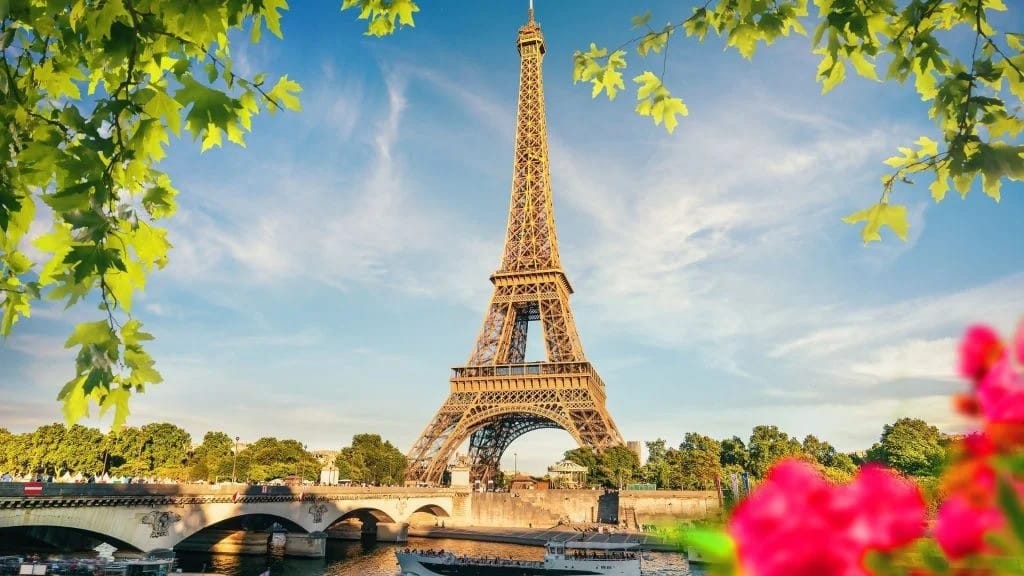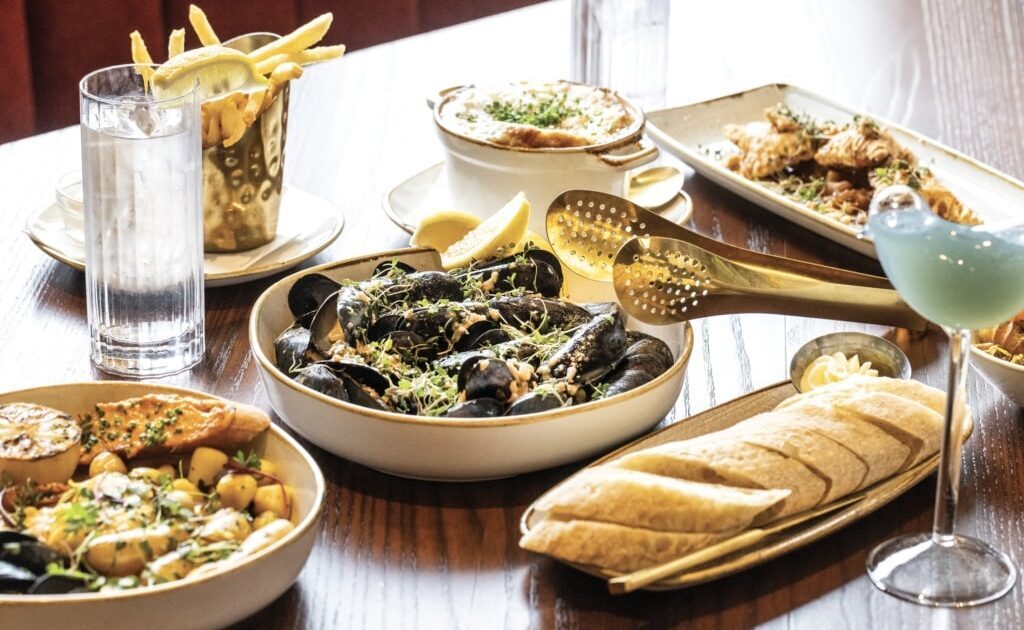A trip to Paris is a dream for many travelers, and this Paris travel guide will help you plan your journey safely, efficiently and enjoyably. Paris, also known as the City of Light, attracts millions of visitors every year with its romantic atmosphere, artistic heritage, elegant architecture and rich cultural history.
Whether you are visiting for the first time or returning to explore new corners of the city, planning your route beforehand makes your experience smoother and more memorable.
This Paris travel guide focuses on practical travel advice, safe sightseeing suggestions and affordable planning tips to help you enjoy Paris confidently.
In this guide, you will find detailed information about the most iconic places to visit, the safest transportation methods, comfortable accommodation areas, delicious local dining options and smart budgeting strategies for a cost-effective trip.
Paris can be overwhelming at first glance, but with the right tips, navigating the city becomes a pleasant adventure.
Paris Travel Guide: Must-See Iconic Landmarks In The City
No Paris travel guide would be complete without mentioning the city’s iconic landmarks. Paris is filled with historical buildings, monumental structures and cultural treasures. The most famous symbol of the city, the Eiffel Tower, is located in the Champ de Mars area.
Whether admired from Trocadéro Square or experienced up close by taking the elevator to the top, it offers spectacular views, especially at sunset. Another must-see is the Notre-Dame Cathedral on the Île de la Cité. Despite the fire in 2019, the cathedral remains an architectural masterpiece of Gothic design.
Nearby, Sainte-Chapelle fascinates visitors with its extraordinary stained glass windows. If your interests lean toward art and history, the Louvre Museum is an essential stop in any Paris travel guide.
Home to masterpieces like the Mona Lisa and Winged Victory of Samothrace, it houses more than 35,000 artworks. For a panoramic view of Paris, visit the Sacré-Cœur Basilica in Montmartre. Located on a hill overlooking the city, it also offers a bohemian artistic atmosphere.
Nearby streets are filled with painters, musicians and charming cafés. To experience Parisian glamour, a walk along the Champs-Élysées toward the Arc de Triomphe is ideal.
Other noteworthy locations include the Luxembourg Gardens, Musée d’Orsay and the Seine River bridges. Boat tours on the river offer a relaxing way to view major landmarks in a single route. Every traveler can find something special in Paris, making it a timeless city to explore.
Public Transportation Tips: Metro, Bus And Walking Routes
This Paris travel guide would be incomplete without addressing one of the city’s biggest advantages: its efficient transportation network. Paris offers affordable and practical travel options through its metro, bus and walking paths.
The Paris Metro is the fastest way to travel within the city. With 16 lines and over 300 stations, it covers most tourist areas. Metro tickets can be purchased individually, but buying a Navigo or Paris Visite pass is more economical for travelers staying several days.
Most stations have clear signage, making the metro easy to navigate, even for tourists. Buses are another key part of transportation in Paris. They provide scenic routes for travelers who want to enjoy city views while moving between destinations.
Bus lines 42 and 69 are especially popular among tourists because they pass by many historical spots. Additionally, RER trains connect the city center with airports and destinations like Disneyland Paris and the Palace of Versailles.
Paris is also a pedestrian-friendly city. Walking is one of the best ways to discover hidden streets, boutiques and neighborhoods beyond tourist crowds. Many attractions are close to one another, especially in districts like Le Marais and Saint-Germain.
For eco-friendly transportation, the city’s bike rental service, Vélib’, is an excellent option. Cycling along the Seine or through side streets can be a great way to explore at your own pace. With safe planning and awareness of pickpocket-prone areas, public transport in Paris is convenient and reliable.
Paris Travel Guide: Safe Accommodation Areas And Hotel Tips
Finding a safe and convenient place to stay is an important part of your journey, and this Paris travel guide offers useful insight into the best accommodation areas. Paris is divided into 20 arrondissements (districts), each with its own character and atmosphere.
Choosing the right location helps improve both comfort and safety during your stay. For first-time visitors, the 1st arrondissement is an ideal option. Located near the Louvre Museum and Tuileries Garden, it offers easy access to major tourist spots.
However, hotel prices in this area tend to be higher. A popular alternative is the 7th arrondissement, home to the Eiffel Tower and other top landmarks. This district is quiet, clean and safe, making it a favorite among families and solo travelers.
If you prefer a lively local environment, the Latin Quarter in the 5th arrondissement offers affordable hotels and a vibrant atmosphere filled with cafés and bookshops. The 4th arrondissement, also known as Le Marais, is another excellent choice.
It is one of the safest and most charming areas in Paris, known for its historic streets, boutique shops and beautiful architecture. Travelers should be cautious when booking hotels in neighborhoods around major stations like Gare du Nord or Gare de l’Est.
While convenient for transportation, these areas can be crowded and less secure in the evenings. This Paris travel guide recommends reading hotel reviews carefully and choosing accommodations close to metro stations to ease daily travel.
Best Food Spots In Paris: From Breakfast Cafés To Local Bistros
Food is an essential part of any Paris travel guide, and exploring the city’s culinary scene is a true delight. Paris offers everything from quick bakery breakfasts to gourmet French dining experiences. Starting your day with a classic Parisian breakfast at a local café is a must.
Fresh croissants, pain au chocolat and café crème are breakfast staples. Neighborhood bakeries often serve the best pastries, especially away from tourist centers. For lunch, baguette sandwiches and quiches are popular and budget-friendly.Try aut hentic French baguettes from bakeries like Poilâne or Eric Kayser.
In the afternoon, relax with a cheese platter and a glass of French wine in Saint-Germain or Montmartre. Dinner is where Paris truly shines. Traditional dishes such as onion soup, duck confit and boeuf bourguignon are French classics worth trying. Cozy bistros and brasseries offer delicious meals in a warm atmosphere.
Eating like a local is simple: choose restaurants filled with Parisians rather than tourists. This Paris travel guide suggests avoiding overpriced venues near major landmarks and looking for smaller, family-run establishments.
Do not forget to explore Parisian desserts. Crème brûlée, éclairs, and macarons from famous patisseries like Ladurée or Pierre Hermé are unforgettable treats. Whether you are dining at a market stall or Michelin-starred restaurant, Paris offers flavor for every taste and budget.
Paris Travel Guide: Budget-Friendly Travel Planning Tips
Contrary to popular belief, a trip to Paris does not have to be expensive. This Paris travel guide provides useful strategies for traveling on a budget. Start by planning your trip in advance. Airfare and hotel prices are much cheaper when booked early, especially for trips between October and April, which is the off-season.
Save on accommodation by choosing boutique hotels, hostels or vacation rentals outside the touristic center but close to metro lines. Eating like a local also helps reduce costs. Markets like Marché d’Aligre or Rue Cler offer fresh and affordable produce for picnics by the Seine.
Many attractions in Paris are free to visit, including Luxembourg Gardens, Parc des Buttes-Chaumont and the Seine River banks. Additionally, museums offer discounted or free entry on certain days. Walking tours are available at little to no cost and help you explore the city authentically.
For transportation, using a weekly Navigo pass is cheaper than buying single metro tickets. Instead of expensive tourist buses, explore on foot or use public transit. Smart planning helps make your journey enjoyable without overspending.
With the tips in this Paris travel guide, you can explore Paris safely, comfortably and without financial stress, making your trip truly unforgettable.
See you in the next post,
Anil UZUN

